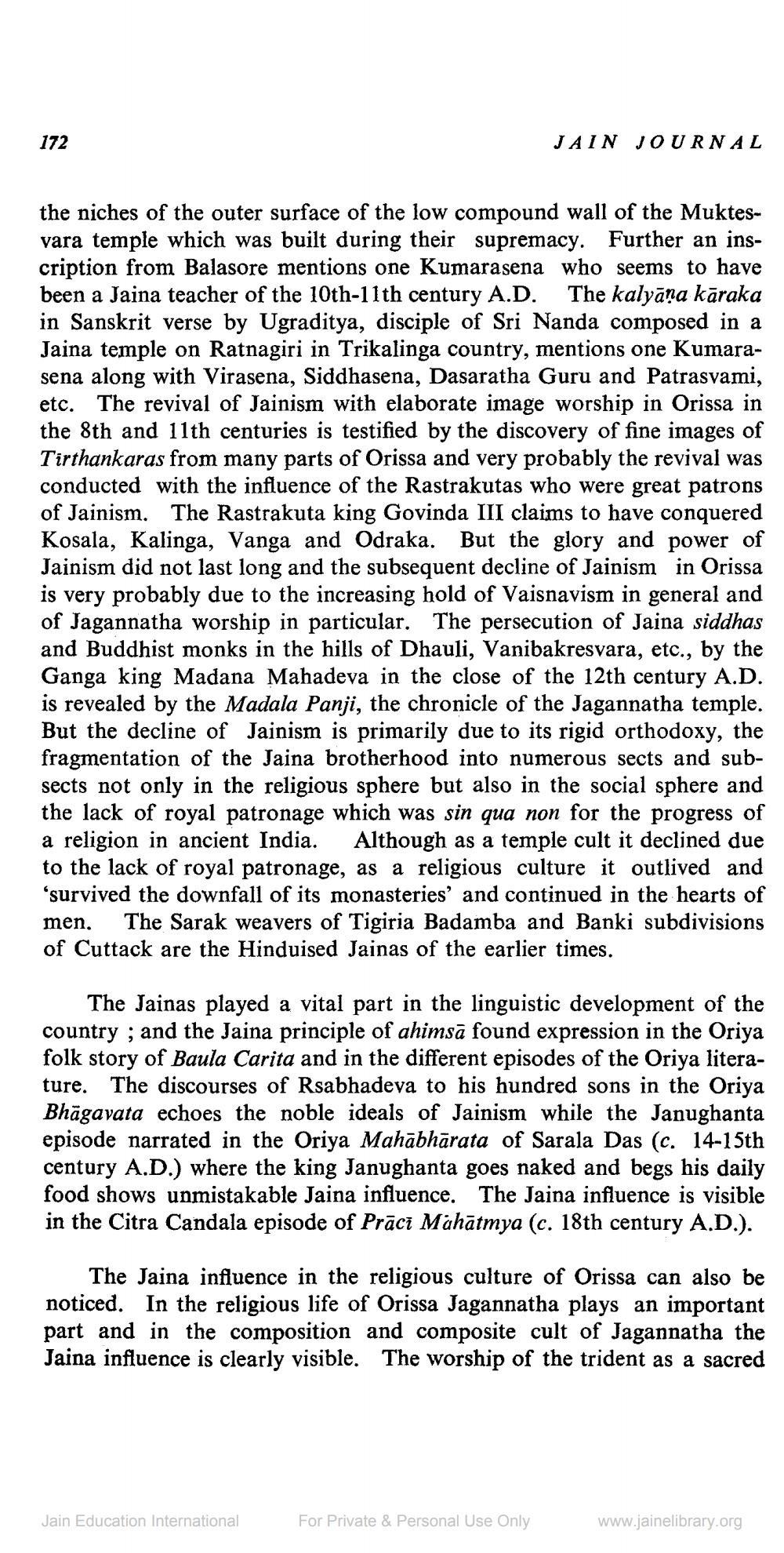________________
172
JAIN JOURNAL
the niches of the outer surface of the low compound wall of the Muktesvara temple which was built during their supremacy. Further an inscription from Balasore mentions one Kumarasena who seems to have been a Jaina teacher of the 10th-11th century A.D. The kalyāņa kāraka in Sanskrit verse by Ugraditya, disciple of Sri Nanda composed in a Jaina temple on Ratnagiri in Trikalinga country, mentions one Kumarasena along with Virasena, Siddhasena, Dasaratha Guru and Patrasvami, etc. The revival of Jainism with elaborate image worship in Orissa in the 8th and 11th centuries is testified by the discovery of fine images of Tirthankaras from many parts of Orissa and very probably the revival was conducted with the influence of the Rastrakutas who were great patrons of Jainism. The Rastrakuta king Govinda III claims to have conquered Kosala, Kalinga, Vanga and Odraka. But the glory and power of Jainism did not last long and the subsequent decline of Jainism in Orissa is very probably due to the increasing hold of Vaisnavism in general and of Jagannatha worship in particular. The persecution of Jaina siddhas and Buddhist monks in the hills of Dhauli, Vanibakresvara, etc., by the Ganga king Madana Mahadeva in the close of the 12th century A.D. is revealed by the Madala Panji, the chronicle of the Jagannatha temple. But the decline of Jainism is primarily due to its rigid orthodoxy, the fragmentation of the Jaina brotherhood into numerous sects and subsects not only in the religious sphere but also in the social sphere and the lack of royal patronage which was sin qua non for the progress of a religion in ancient India. Although as a temple cult it declined due to the lack of
of royal patronage, as a religious culture it outlived and 'survived the downfall of its monasteries' and continued in the hearts of men. The Sarak weavers of Tigiria Badamba and Banki subdivisions of Cuttack are the Hinduised Jainas of the earlier times.
The Jainas played a vital part in the linguistic development of the country ; and the Jaina principle of ahimsā found expression in the Oriya folk story of Baula Carita and in the different episodes of the Oriya literature. The discourses of Rsabhadeva to his hundred sons in the Oriya Bhāgavata echoes the noble ideals of Jainism while the Janughanta episode narrated in the Oriya Mahābhārata of Sarala Das (c. 14-15th century A.D.) where the king Janughanta goes naked and begs his daily food shows unmistakable Jaina influence. The Jaina influence is visible in the Citra Candala episode of Prāci Mahātmya (c. 18th century A.D.).
The Jaina influence in the religious culture of Orissa can also be noticed. In the religious life of Orissa Jagannatha plays an important part and in the composition and composite cult of Jagannatha the Jaina influence is clearly visible. The worship of the trident as a sacred
Jain Education International
For Private & Personal Use Only
www.jainelibrary.org




